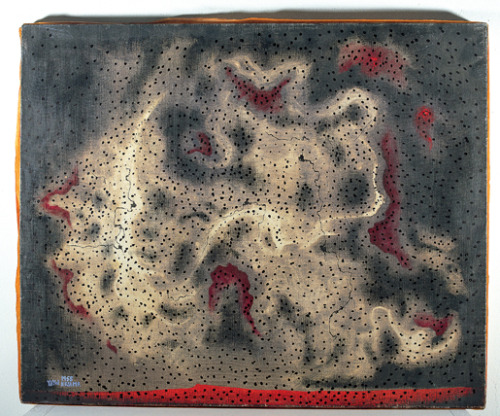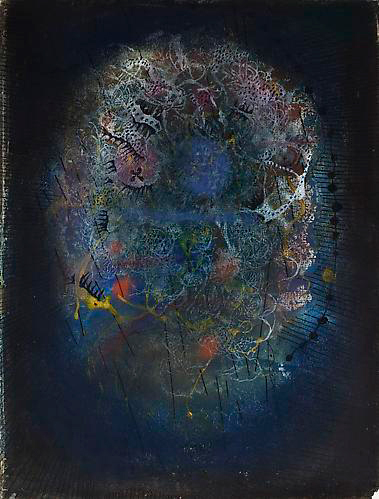
This painting called "Lingering Dream" was Yayoi Kusama's few Nihonga style painting she produced in her early years. Through the painting she presented to the viewer a war-scarred landscape with crimson sunflower.
Soon Yayoi Kusama turned her attention to the European art. She was heavily influenced by symbolism and surrealism as well as contemporary avant-garde movements. She taught herself Western style oil painting, with mixture of the Nihonga style, she made these paintings.
 | |||||||||
| Corpses (Prisoner Surrounded by Curtain of Depersonalization) |
 |
| On the Table |
 |
| Tree 1952 |
 | |
| God of the Wind |
 | |
| Dance Custom |
Yayoi Kusama produced over two hundreds fifty artworks in early 1950s. She was only in her twenties. She used variety of media including ink, pastel, watercolor, gouache and tempera. All her paintings are similar yet very different in style. They all feature abstracted forms that suggest natural phenomena. Tiny hieroglyphic details can be found all over her paintings: eyes, dots, spiky networks of cilia and tapole-like forms.
"She combines various techniques from Cubism and Surrealism, such as decalcomanie and frottage, and makes them her own, getting unforeseen results from such juxtapositions. Her work has no connection to the doctrines of Cubism or Surrealism but seems to operate directly through the senses, linking technique to physiology without conflict or contradiction. It's a very feminine painterly sensibility, and the works done some years ago with traditional Japanese materials are masterfully evocative. " said Kenjiro Okamoto, an art critic
Despite such success, Yayoi Kusama felt that Japan was too small, too servile, too feudalitsitc and too scornful of women. She wants a bigger stage - U.S.A.
No comments:
Post a Comment